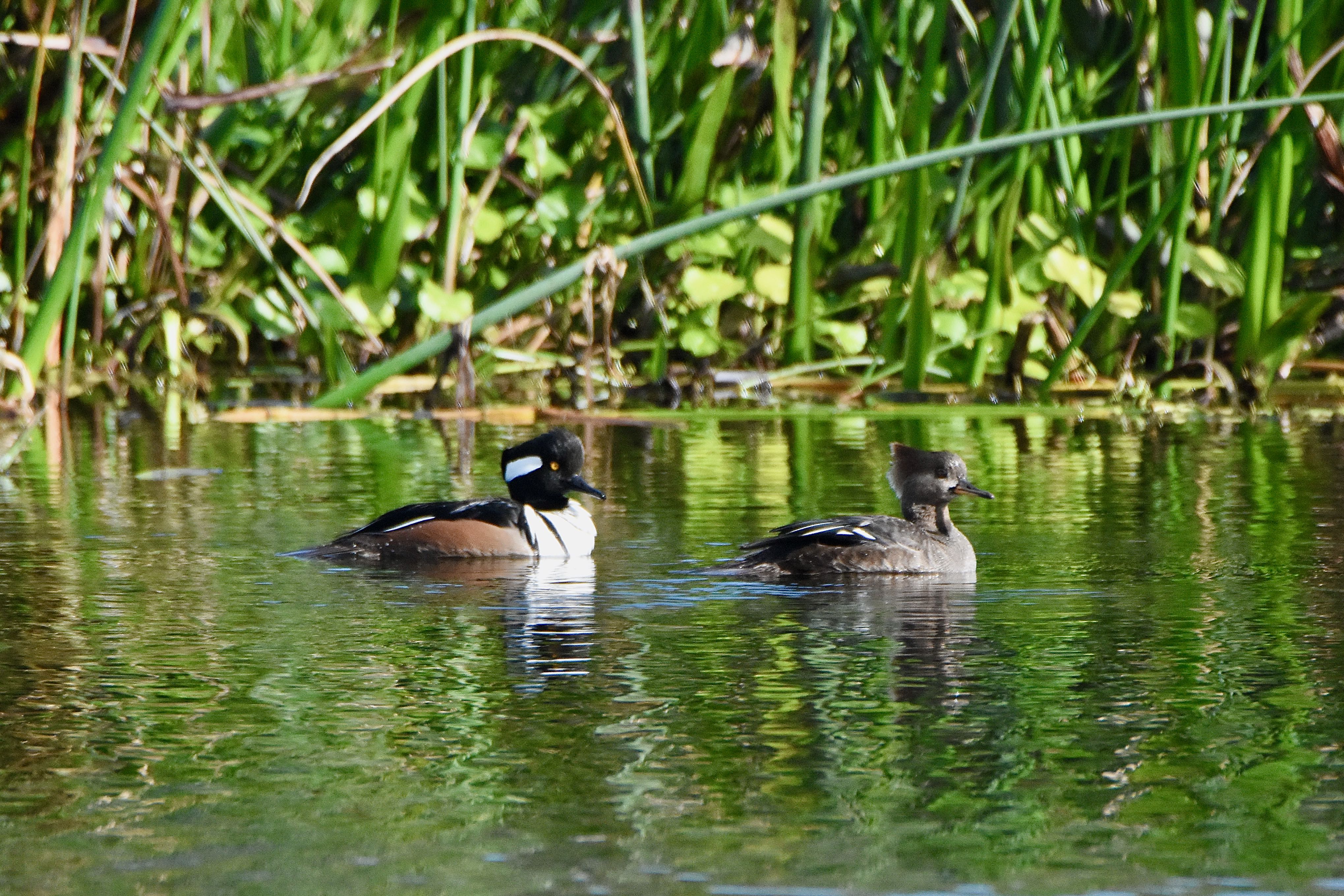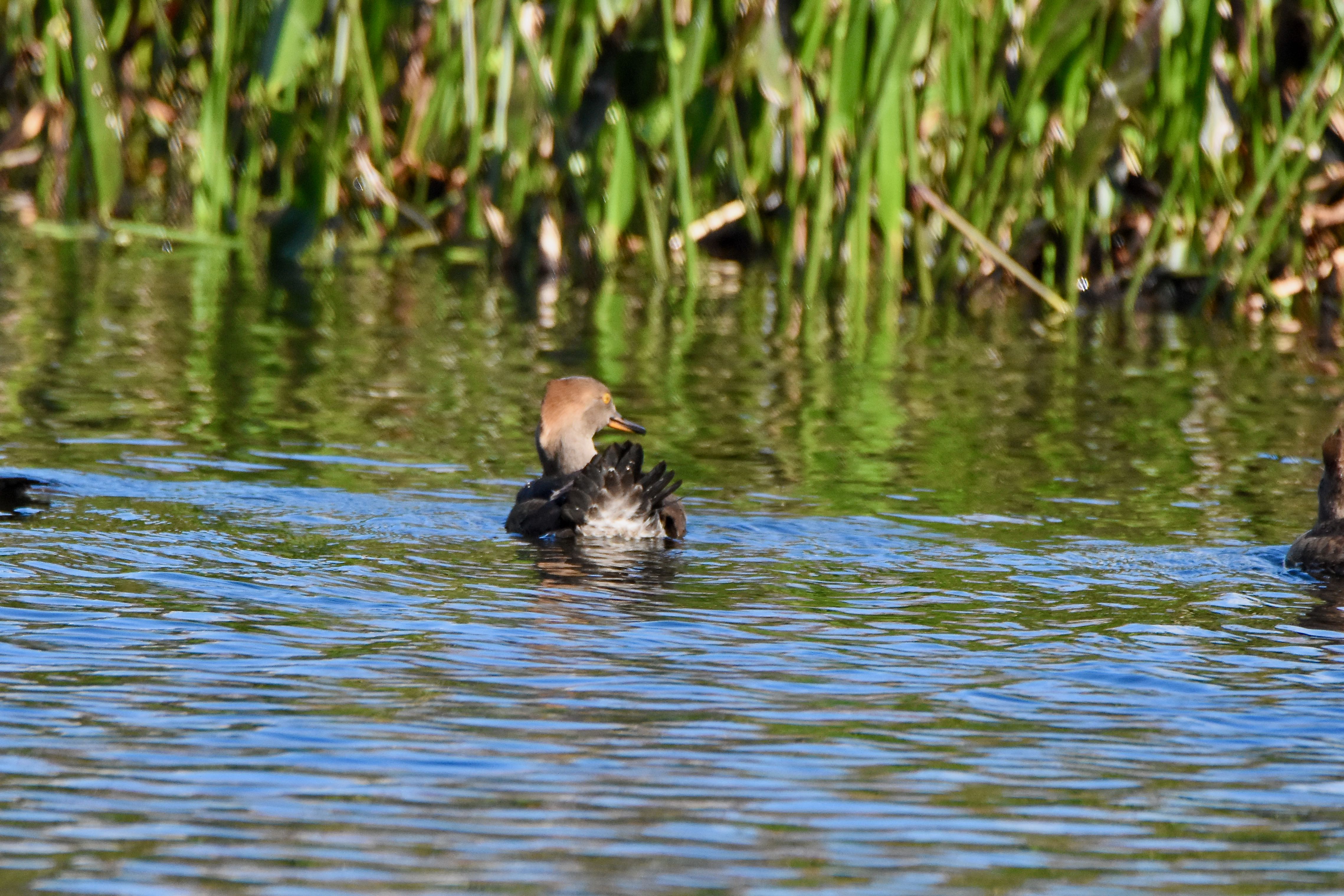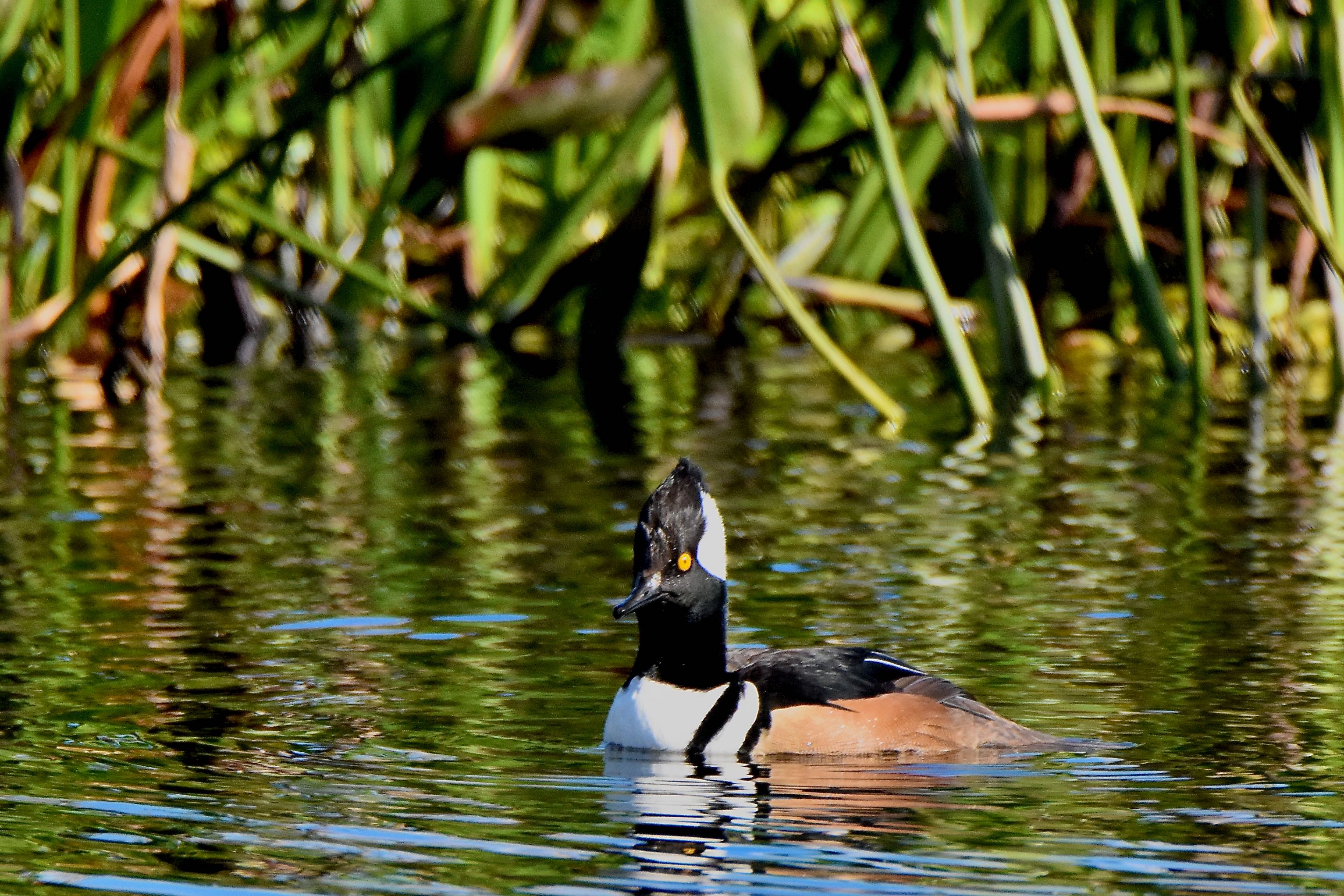
Hooded mergansers, photographed at Peaceful Waters Sanctuary, Wellington, Palm Beach County, in January 2017.
There are three species of mergansers in North America. The hooded merganser, Lophodyes cuculatus, is the smallest, and in our eyes, at least, the one that got the best deal when it comes to looks.
It is one sharp bird, particularly the male with his dramatic black face, golden eye and brilliant, white crest, the "hood" in the hooded merganser.
It is also one of the rarest breeding birds in Florida, according to the Florida Fish and Wildlife Conservation Commission. If you stumble upon a hooded merganser hen with chicks in tow swimming their way through the Sunshine State you would be seeing something that few people have ever witnessed.
Not that hooded mergansers are all that unusual in Florida. It's just that by and large, they're winter visitors, arriving in September or October and departing for points north by April. They're found throughout much of North America, from the Atlantic Coast into the Central Plains and along the Pacific Coast of Alaska and Canada south into California. They're nonmigratory in most of their range, but a portion of the population spends summers in the northern tier of the United States and Canada, then flies south for the cold months.
So what exactly is a merganser? Well, another name for this group of birds is sawbills, which refers to the teeth-like serrations along the edges of their mouth parts. Those serrations come in handy when the bird is hunting one of its favorite foods — fish.
Merganser, by the way, is said to be a combination of two Latin words, mergus, meaning diver, and anser, meaning goose. Diving goose, or more accurately, diving duck. Which is a perfect description of how this bird hunts. It dives for food rather than dabbles, which involves hunting underwater without fully submerging. Both males and females share the hood-like crest, but females lack the sharp blacks and whites. Instead, their crest is rust-colored. Overall, females are a mix of grays and browns and have dark eyes. Males have a black face, white crest, white breast, with "slash" marks on the side. Their flanks are cinnamon. Immature males (middle photo below) look like the females, but have golden eyes and a dark bill.
Hooded mergansers are cavity nesters, usually calling home a hole in a tree anywhere from 10 to 50 feet in the air. Occasionally, they'll nest in a hollow log on the ground or even in a burrow in an embankment. They will nest in boxes put out for wood ducks. Mom lines the cavity with her own down. Clutches are five to 12 eggs; if there are more than 12, chances are another merganser hen dumped some excess offspring on an unsuspecting mom. The eggs require about a month or more of incubation, with the hen handling all sitting duties. Young mergansers are ready to leave the nest a day after hatching; mom flies to ground and the kids jump down. They're immediately capable of feeding themselves, catching mostly insects. They're ready to go out into the world on their own in about 70 days or so.
Hooded mergansers are members of Anatidae, the family of ducks, geese and swans.
Peaceful Waters Sanctuary



